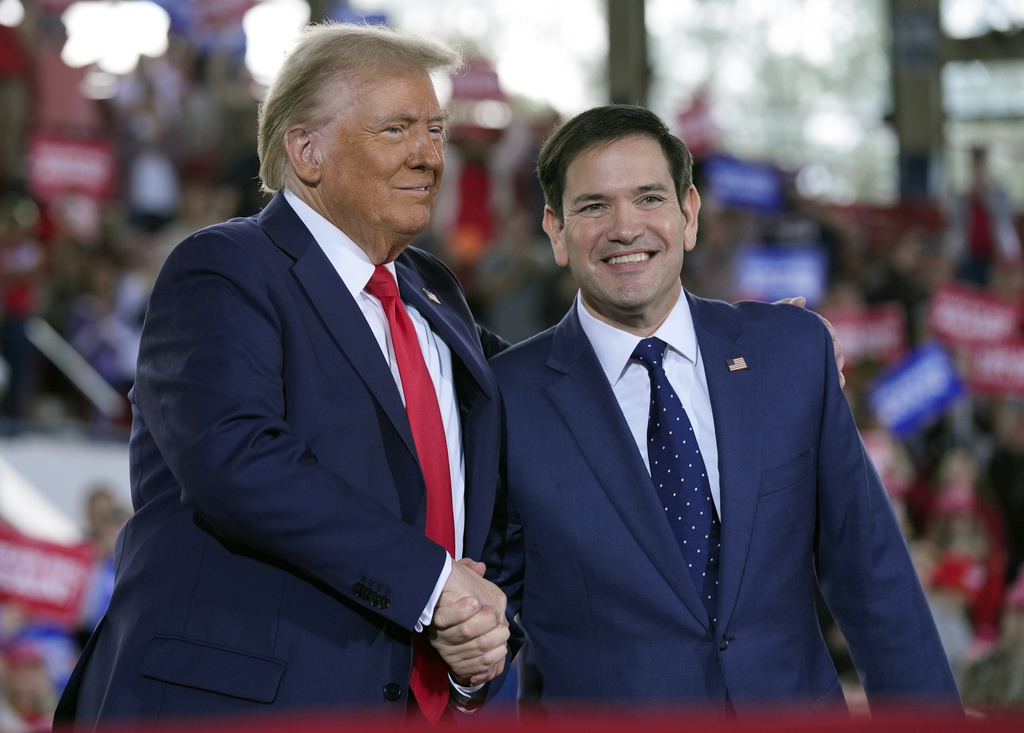Women, Minorities, Break Barriers in Trump Cabinet Selections \ Newslooks \ Washington DC \ Mary Sidiqi \ Evening Edition \ President-elect Donald Trump’s administration, while less diverse overall than President Joe Biden’s, includes several historic firsts for women and people of color in key roles. Marco Rubio could become the first Latino secretary of state, Susie Wiles the first female chief of staff, and Scott Bessent the first openly gay Treasury secretary. Appointees like Vivek Ramaswamy, Tulsi Gabbard, and Mehmet Oz also bring cultural diversity to prominent positions.
Trump’s Cabinet Diversity Debate: Historic Firsts and Lingering Gaps – Quick Looks
- Cabinet Composition: Trump’s Cabinet will be one-third women and include several groundbreaking appointees.
- Historic Firsts: Marco Rubio could be the first Latino secretary of state; Susie Wiles would be the first woman chief of staff.
- Treasury Milestone: Scott Bessent is poised to become the first openly gay Treasury secretary.
- Health Leadership: Mehmet Oz, a Turkish American, will lead CMS as the first Muslim in the role; Janette Nesheiwat, a Jordanian-American physician, is tapped for surgeon general.
- Advisory Roles: Vivek Ramaswamy, Indian American, and Elon Musk will co-lead a government efficiency panel; Tulsi Gabbard, of Samoan descent, will head intelligence.
- Diversity Comparison: While breaking barriers, the overall diversity of Trump’s administration trails President Biden’s.
- Ideological Range: The Cabinet features broad ideological perspectives, potentially leading to internal conflicts.
Deep Look
Groundbreaking Appointments in the Cabinet
Among the standout selections is Florida Senator Marco Rubio, Trump’s nominee for secretary of state. If confirmed, Rubio will become the first Latino to serve in the nation’s top diplomatic role. This nomination highlights Trump’s willingness to appoint high-profile figures from underrepresented groups, even as his campaign rhetoric has often criticized diversity policies.
Another historic first comes with Scott Bessent’s nomination as Treasury secretary. Bessent, a hedge fund manager with extensive financial expertise, is poised to become the first openly gay man to lead the department. His appointment reflects a mix of groundbreaking diversity and alignment with Trump’s pro-business agenda.
The selection of Susie Wiles as White House chief of staff marks another milestone. Wiles, a longtime political strategist and key figure in Trump’s campaign efforts, will become the first woman to hold the position. Her role will be pivotal in shaping the administration’s day-to-day operations and policy coordination.
Diversity in Other Leadership Roles
In health-related positions, Trump has chosen Mehmet Oz, a Turkish-American physician and television personality, to lead the Centers for Medicare and Medicaid Services (CMS). Oz’s appointment marks another milestone as he becomes the first Muslim to hold the role. Janette Nesheiwat, a Jordanian-American physician with extensive experience in emergency medicine and public health, is Trump’s pick for surgeon general.
The administration also includes Vivek Ramaswamy, an Indian-American biotech entrepreneur and former GOP presidential candidate. Ramaswamy, alongside billionaire Elon Musk, will co-chair an advisory panel on government efficiency. Their focus will be on streamlining operations and improving accountability across federal agencies.
Housing Leadership with Historical Context
Balancing Diversity with Ideological Breadth
While the administration features several historic firsts, its overall diversity metrics are less impressive when compared to Biden’s Cabinet, which achieved unprecedented representation across gender, race, and ethnicity. However, Trump’s Cabinet does include a wide ideological range, from traditional conservatives to unconventional thinkers.
This ideological diversity may lead to friction on key policy priorities, particularly in areas like trade, foreign relations, and economic strategy. Such tensions were also evident in Trump’s first administration, where appointees often clashed over competing visions for the country’s future.
A Legacy of Historic Appointments
Representation and Policy Implications
The debate over Trump’s Cabinet diversity underscores broader questions about representation in government. Supporters argue that Trump prioritizes qualifications and alignment with his agenda over identity politics, leading to barrier-breaking appointments on merit. Critics, however, contend that the administration’s lack of overall diversity reflects a resistance to broader inclusion efforts.
Trump’s willingness to appoint diverse leaders to key positions, combined with his campaign rhetoric against diversity programs, highlights the complexities of representation in his administration. These appointments carry significant symbolic weight while also signaling Trump’s strategic reliance on trusted allies and loyalists.
A Cabinet That Reflects Trump’s Style
As the incoming administration takes shape, these leaders will face significant challenges in navigating both the responsibilities of their positions and the broader political dynamics of Trump’s governance. Their performance will play a critical role in shaping Trump’s legacy during his second term.
Women Minorities Women Minorities Women Minorities







